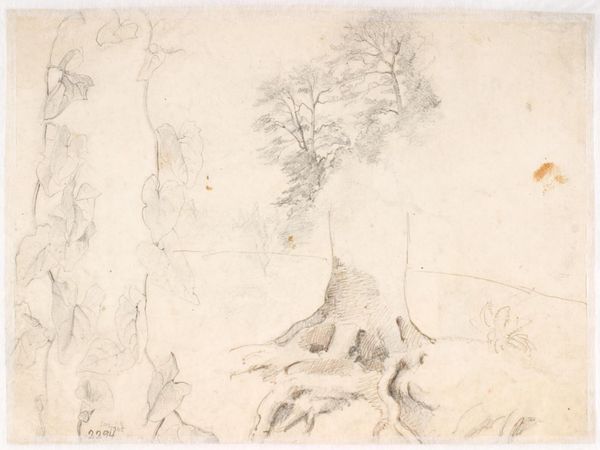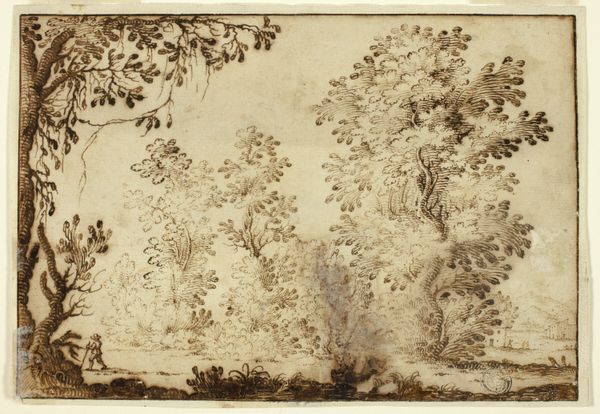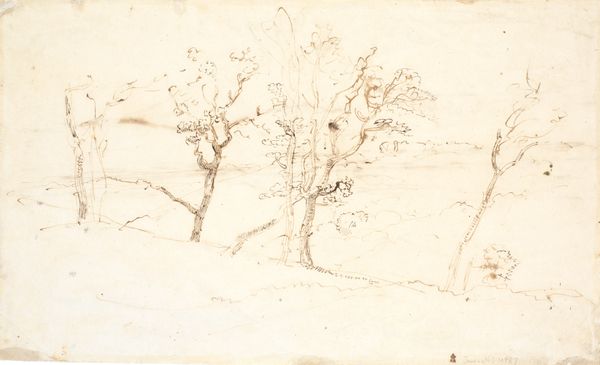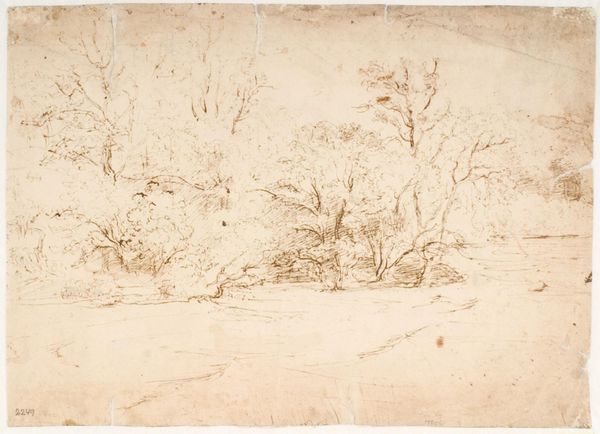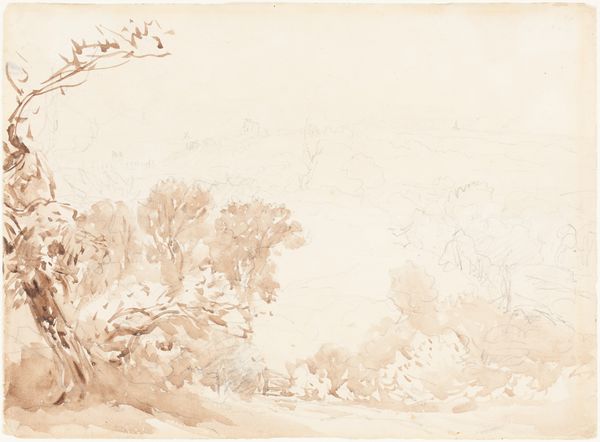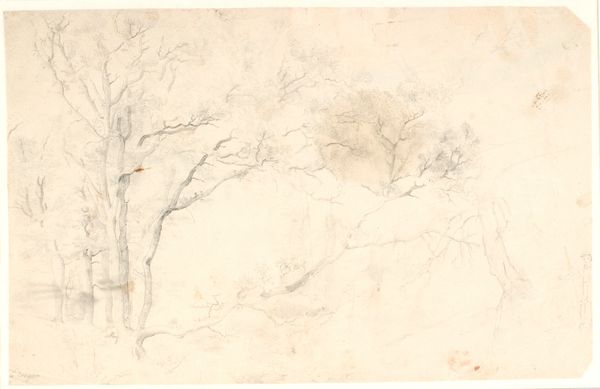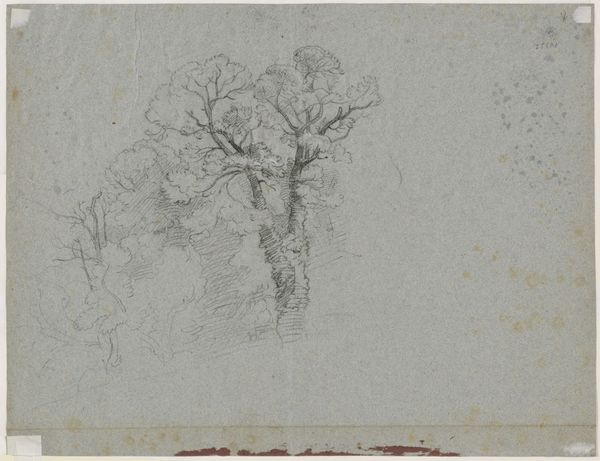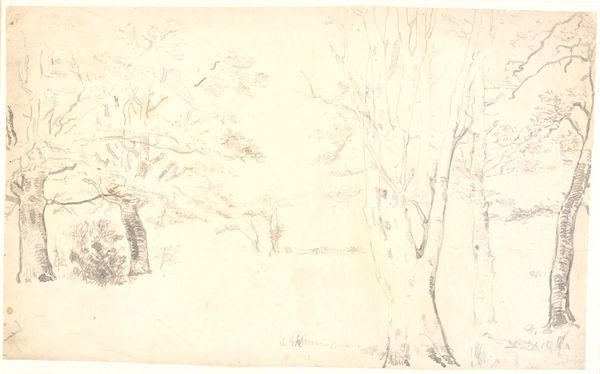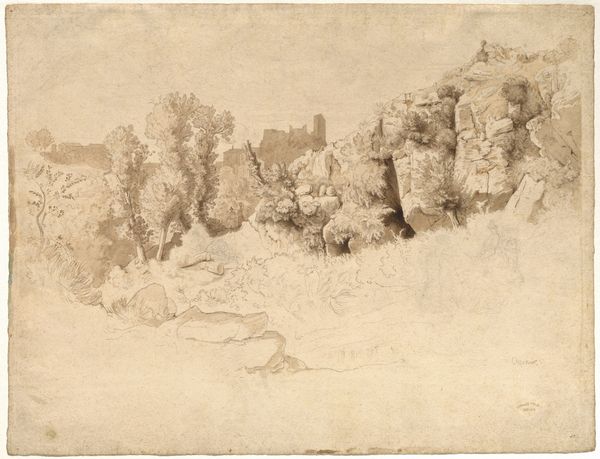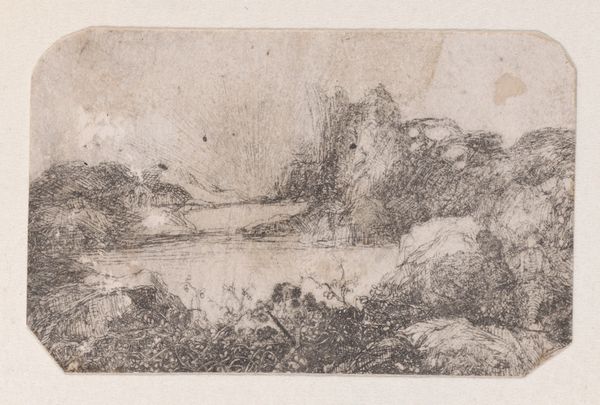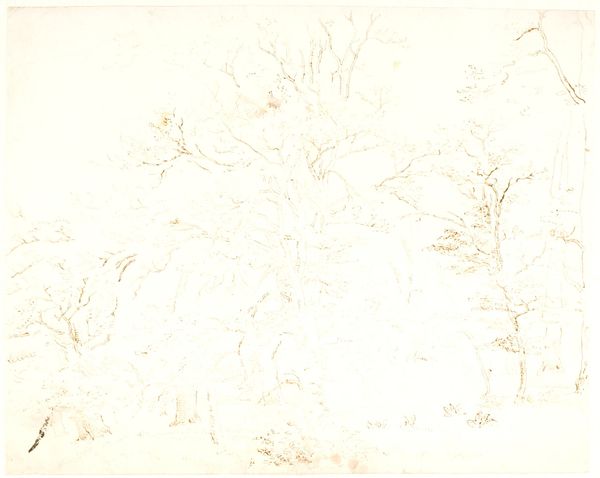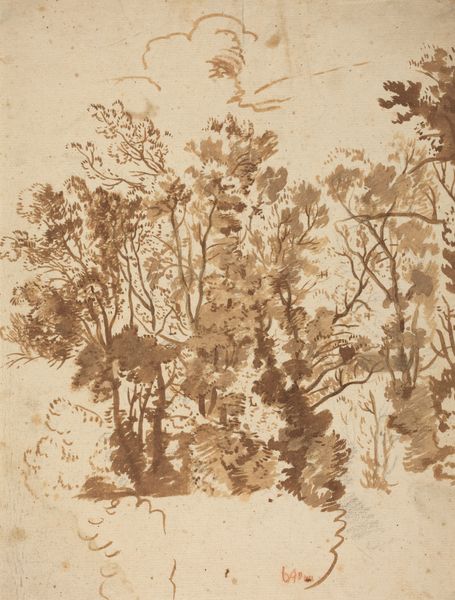
drawing, ink, pencil
#
drawing
#
ink drawing
#
landscape
#
ink
#
romanticism
#
pencil
#
northern-renaissance
Dimensions: 208 mm (height) x 338 mm (width) (bladmaal)
Editor: This is "Studie med trær, planter og stubbe," or "Study with Trees, Plants and Stumps" by Dankvart Dreyer, from the 1840s. It's rendered in ink and pencil. It feels like a fleeting snapshot of a forest, full of different textures created with such simple materials. What draws your attention when you look at this work? Curator: I see an inquiry into the very materials of landscape depiction itself. Dreyer uses the readily available ink and pencil, democratizing the artistic process. Notice the paper itself, likely a common stock. This wasn't about lavish presentation but about recording, exploring. Consider the accessibility of these materials versus the cost of oils and canvas during this time. How does that impact our reading of “landscape art” then? Editor: That’s a good point. It’s interesting how the drawing style, though skilled, doesn’t try to hide its process. You can almost see Dreyer experimenting with different line weights and shading techniques. Curator: Exactly! We see the artist *working*. It isn't a pristine "nature scene" delivered to a wealthy patron. It is Dreyer engaged with the tangible reality of the forest *and* the tangible reality of image making. It begs the question, how does the materiality of this piece—the visible labor, the humble materials—challenge notions of high art and Romantic landscape ideals prevalent at the time? Editor: I never thought about landscape art that way, considering the means of production. This piece feels less about idealized nature and more about Dreyer's direct interaction with it, recorded using immediate materials. Curator: Precisely. This artwork gives us a peek into how the tools and the labor impact not just what we *see* in a work, but also how we understand its purpose and context. Editor: I appreciate seeing how even seemingly simple landscape drawings can hold so much information about art production!
Comments
No comments
Be the first to comment and join the conversation on the ultimate creative platform.
